
Ferrari SF-24: a 95% new car to lead the charge against Red Bull
(Cover picture: Scuderia Ferrari)
The unveiling of a new Ferrari, as we know, is often very anticipated not only in Italy but throughout the world. The wait for a new single-seater from the Cavallino brings with it doubts and questions about its competitiveness and the Title chances that it will be able to guarantee: although the fans of the Red team come from a 2023 with few satisfactions, the presentation of the SF-24 which took place on Tuesday February 13th is an opportunity for Ferrari to "reset" what has happened so far and try to worry the World Champions Red Bull.
The SF-24 hits the track for the first time with @carlossainz55 behind the wheel! ✌️ #CarlosSainz #F1 #SF24 pic.twitter.com/Im30njxAFh
— Scuderia Ferrari (@ScuderiaFerrari) February 13, 2024
A few days after its presentation, the new Ferrari SF-24 has already carried out a couple of tests on track:
- A 15 km shakedown at the Fiorano track;
- A 200 km filming day, again in Fiorano;
Let's start by saying that on both occasions no obvious problems were endured, that's why the configuration that will be sent to Bahrain for collective tests (from 21 to 23 February) can be considered a real baseline. So let's start with its technical analysis.
A car inspired by Red Bull, but without betraying its design philosophy
Looking at the SF-24 in its bright red livery with little visible carbon fiber and two eye-catching yellow and white stripes, the inspiration that last year's Red Bull RB19 may have provided is immediately clear: many macro-details are there with the aim of exploiting the airflow patterns that the Anglo-Austrian car managed to achieve. However, saying that Ferrari only tried to copy Red Bull is an understatement, since there are many counterearguments which instead show how at Maranello they wanted to keep design choices already validated with last year's SF-23.
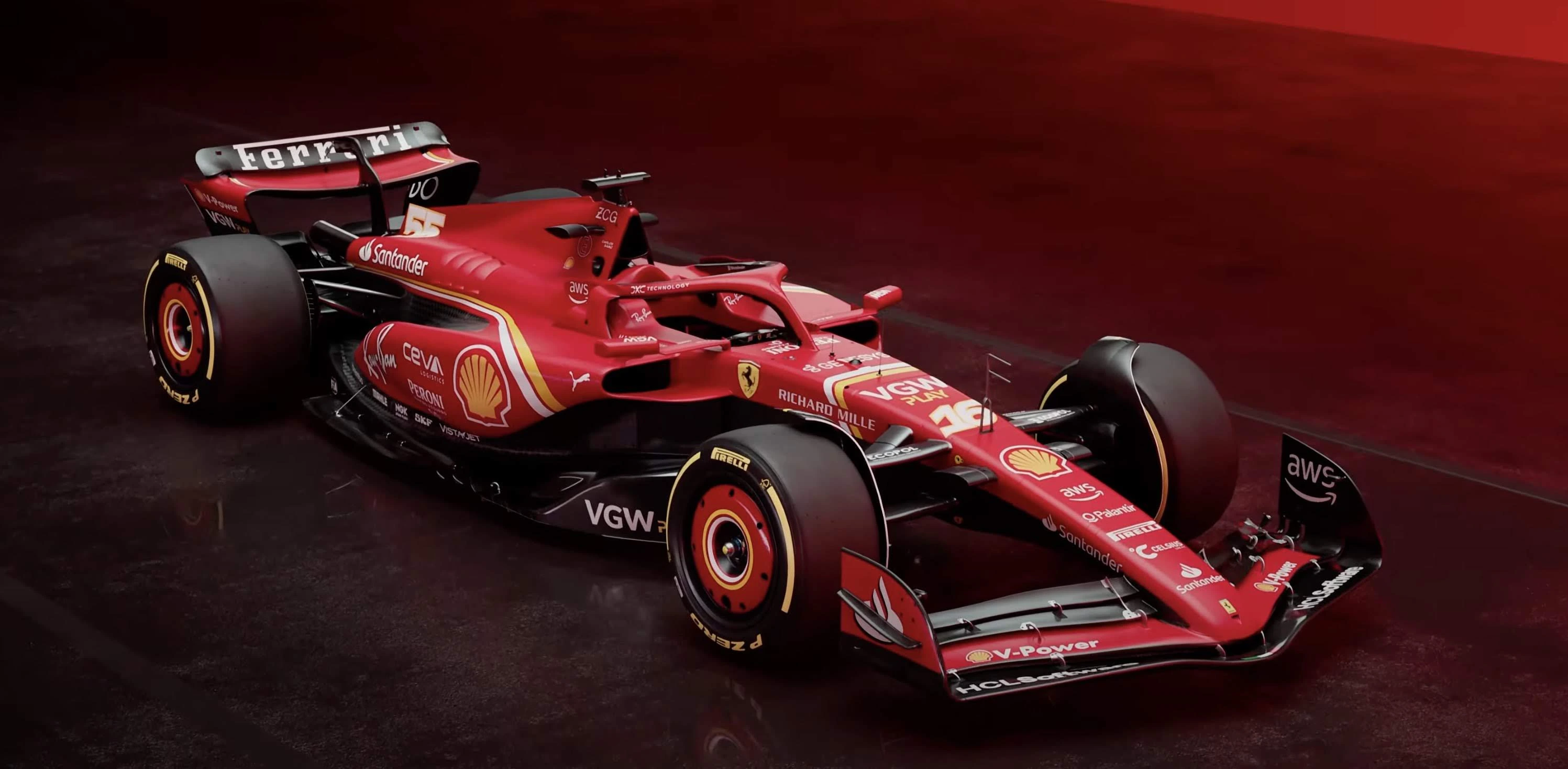
The new Ferrari SF-24 (photo: Scuderia Ferrari)
The mix between Red Bull solutions and Ferrari's own concepts has given life, in the words of Frederic Vasseur, to "a 95% new single-seater". Obviously, having renewed last year's project in such a profound way doesn't automatically mean eliminating the critical issues, but it's certainly an important step after the long period of understanding that was necessary in the middle of last season.
"We revised the car concept because everything depends on aerodynamic development and the ability to better manage the airflow: with the SF-23 we had reached the limit of development, so it was crucial to change to unlock performance, mainly by making the underfloor work... The indications coming from the simulator are good, but what matters is always the comparison with the others. We can't wait to start this season, to verify the real competitiveness of the SF-24"
Enrico Cardile [Ferrari Technical Director, Chassis and Aerodynamics]
Front end developed in continuity with the past, but the nosecone follows the 2024 trend
At the front, many elements in continuity with the last single-seater are immediately visible, above all the shape of the front wing and the push-rod suspension layout. The nosecone, however, although connected to the first flap of the front wing rather than to the mainplane, sees a profoundly renewed geometry. Let's try to understand how the entire front end of the SF-24 works aerodynamically...
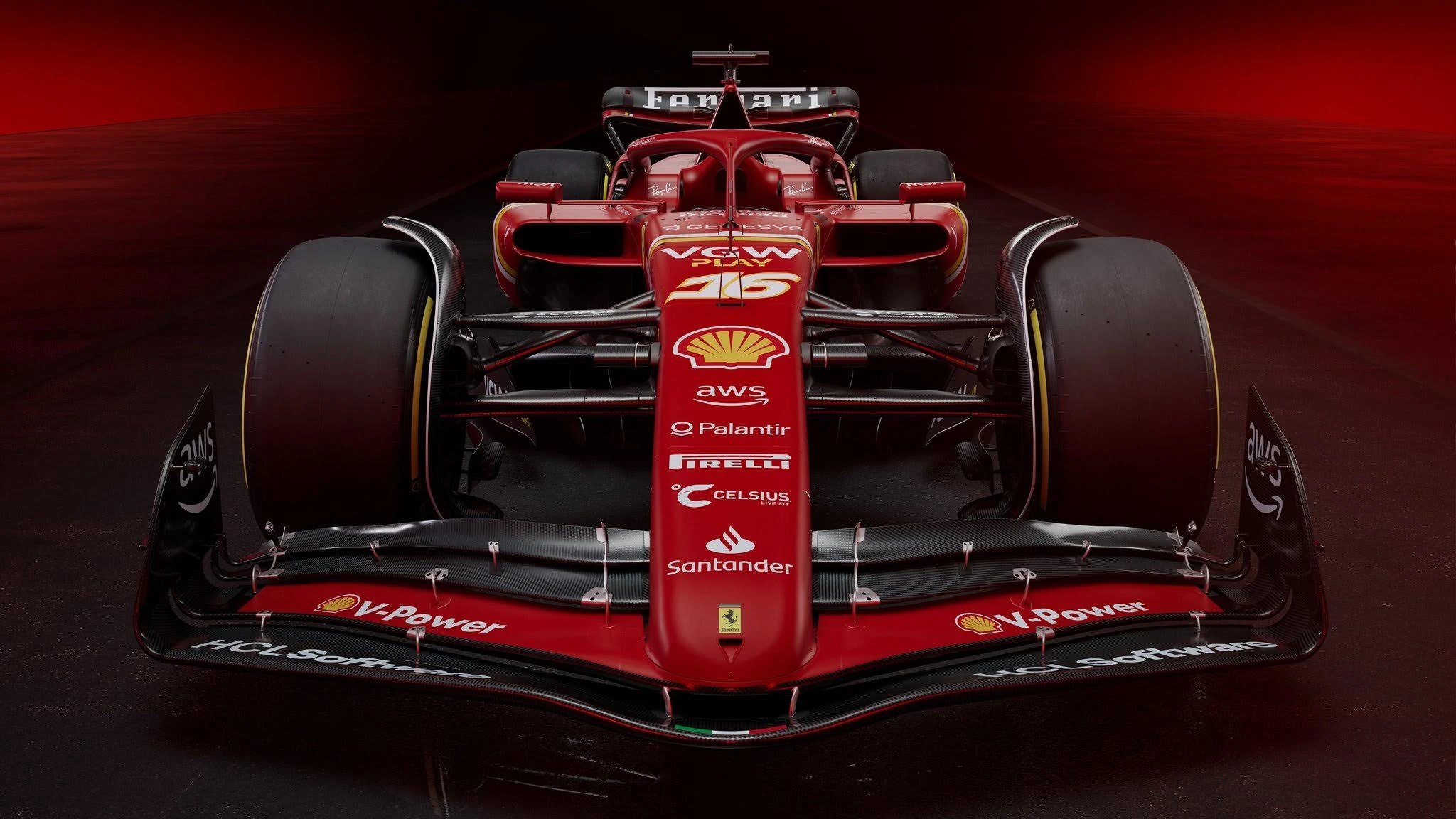
Front view of the new Ferrari SF-24 (photo: Scuderia Ferrari)
The front wing, as mentioned, shows almost similar chord profiles: at least until now, we don't see similar solutions to Mercedes - in which the last flaps significantly reduce their chord as they join the endplates. Despite this, the last two flaps of the new Ferrari still show a certain degree of detachment from the endplates, in order to maximize the outwash in that area: this term refers to the aerodynamic phenomenon with which the airflows are directed towards the outside, in this case to "collect" the turbulent wake generated by the front tyres and move it away from the bodywork, where it could compromise the functioning of the latter.
Still talking about the front wing, we've noted that the 5 flow diverters which had generated such a stir between 2022 and 2023 are missing (demonstrating how their role was not primary in the management of airflow towards the rest of the car).
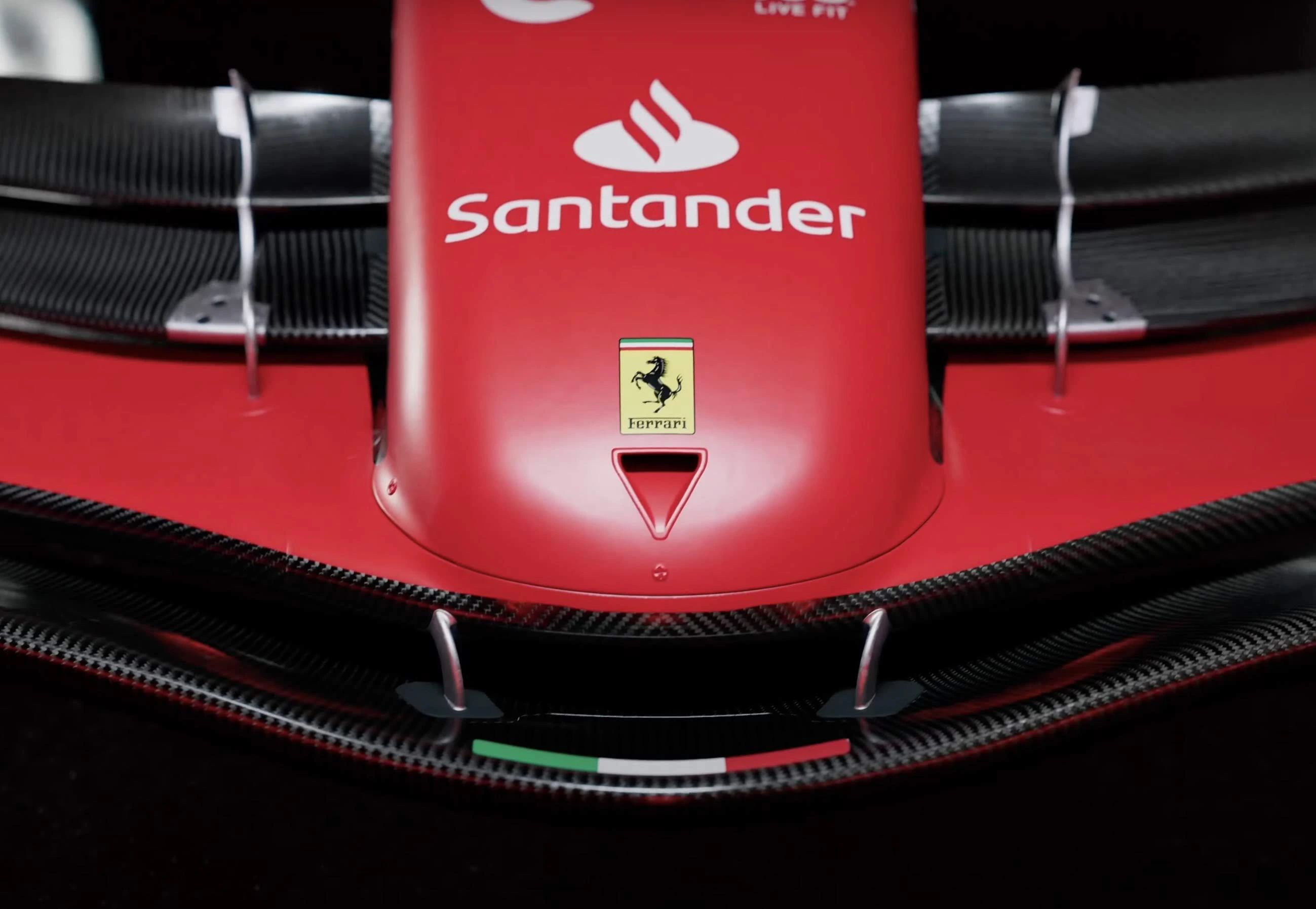
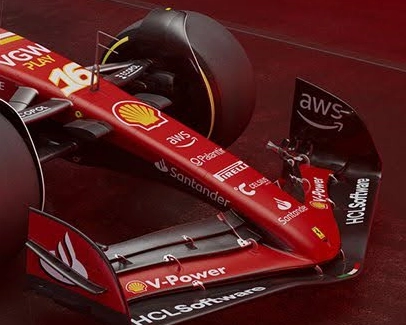
New nosecone concept for the Ferrari SF-24 (photo: Scuderia Ferrari)
Looking at the nosecone in detail, that's where the major differences emerge compared to the SF-23: its structure appears wider and flatter, which - in addition to structural reasons - once again suggests a precise aerodynamic intent. The idea appears immediately clear when you observe its lower part, so thin and high to make it clear how much the engineers at Maranello wanted to free up this area to bring as much air as possible towards the underfloor. This is a trend common to many of the cars presented this year, a sign that in the third year of regulatory stability, convergence is being achieved towards what appears to be the best solution.
As mentioned, the front suspension is a push-rod one, with geometries that accentuate the anti-dive characteristic (we talked about it in detail in this article), in order to keep the vehicle platform at constant ride heights as much as possible - so as to make the floor work in a limited range of the best operating conditions it can find itself in.
Sidepods with deep undercuts and similar inlet to the competitors
The central area of the SF-24 features sidepods with extremely raised inlets, just as Red Bull "prescribed" during 2023. The goal here is to free up a large volume for extended undercuts, useful for extracting the greatest possible airflow and send it, using the same sidepod geometry, towards the upper part of the diffuser. This had been clear at Ferrari for months now, but in the last Championship the engineers at Maranello were unable to make such modifications due to the (in hindsight "unfortunate") positioning of the side impact protection structures - mandatory by the Technical Regulations... With the design of the new chassis, the latter have been moved and this limitation's been eliminated.
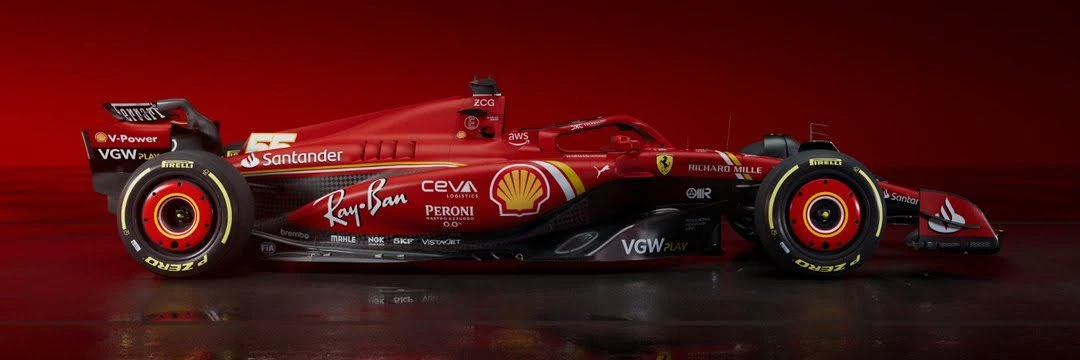
Side view of the Ferrari SF-24 (photo: Scuderia Ferrari)
Complementary to this goal, as can be seen above, the sidepod inlets themselves show a lower lip that is much more extended than the upper one: the compromise here lies in keeping the entire inlet in an elevated position, without losing any frontal surface. In fact, let's remember that the sidepod inlets must provide for the cooling of a Power Unit which although is the same as last year - as its development is frozen - but still requires a certain airflow with which to extract the enormous quantity of heat that is generated in the most diverse conditions.
Even if at Ferrari they were very careful to avoid publishing photos of this crucial area, the inlets of the Venturi channels are very high in their central portion, and then reduce their height as they blend into the lateral edge of the floor itself; speaking of the latter, it's plausible that between now and the Bahrain tests there will already be some tweaks, so we're not gonna dwell on what we have seen.
That said, in the photo above it's clear how the outermost of the "strakes" covers the greatest possible surface allowed by the regulation: since this trend is also common to other teams, we can conclude that everyone has now understood very well how to manage the airflows that go into that area.
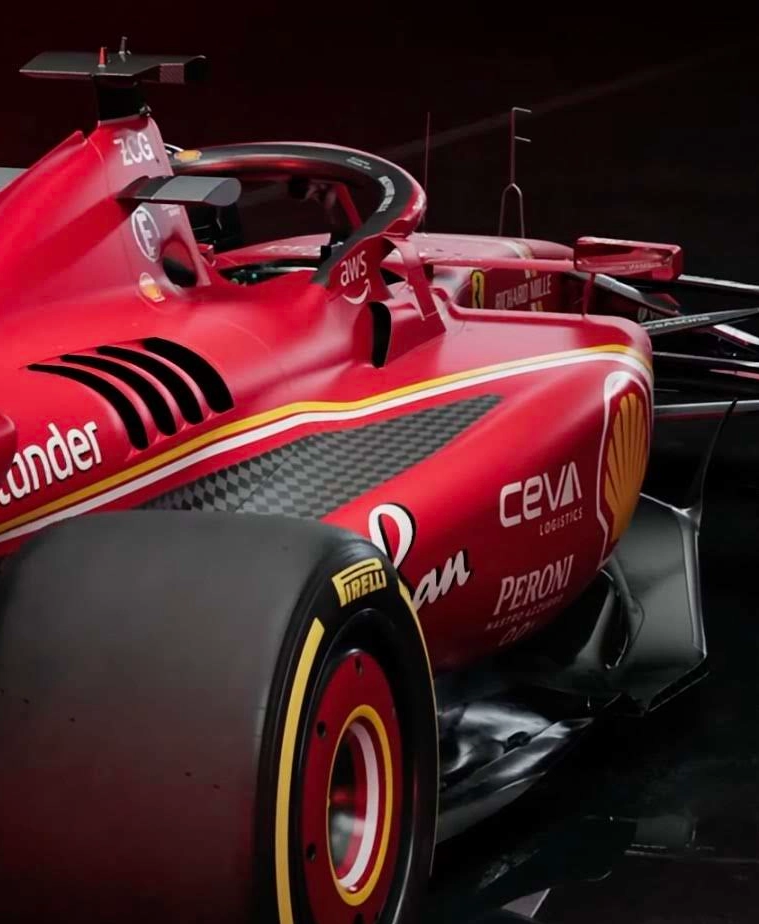
Aerodynamic details on the sides of the cockpit of the Ferrari SF-24 (photo: Scuderia Ferrari)
This year too, Ferrari proves to be one of the teams that pays the most attention to detail in the cockpit area, where a lot of harmful turbulence is usually generated between the halo and the cockpit itself.
The Ferrari engineers opted for a series of small aerodynamic fairings on the SF-24 that minimize such flow losses, just as the "by-pass duct" that debuted on last SF-23 tries to do. In general we're not talking about elements that can completely change the behavior of a single-seater on track, but about solutions that - in their small way - have the task of being useful to the cause.
However, there are no "horns" on the sides of the airscope, which has retained a rather narrow triangular section.
Rear end analysis: Aston Martin-style "waterslides", but the rear suspension is still a pull-rod one
From a technical point of view, most of the innovations present on the SF-24 are in the rear end, composing a picture which - in my opinion - represents a huge step forward compared to its predecessor. Let's delve into it...
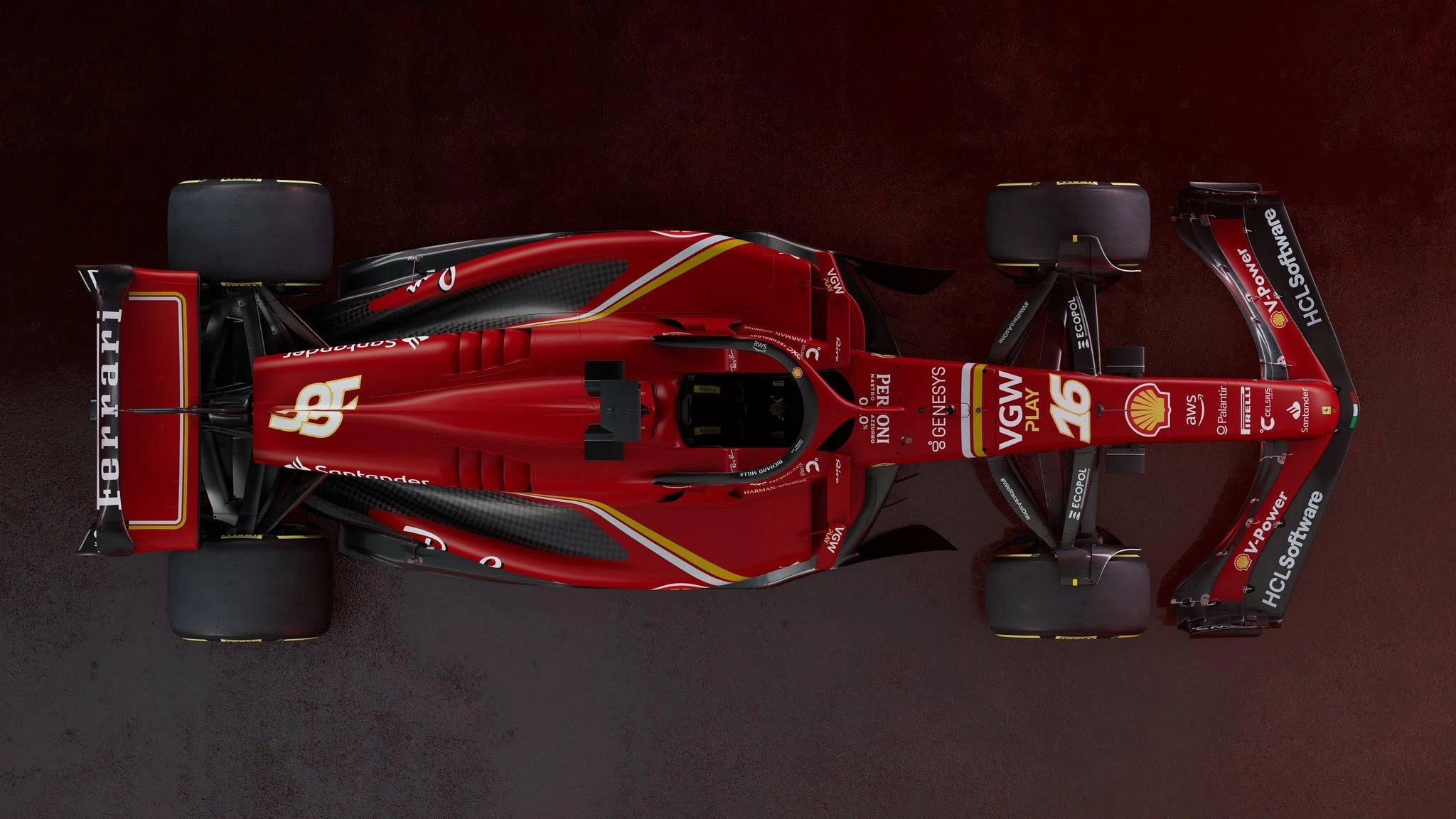
Top view of the new Ferrari SF-24 (photo: Scuderia Ferrari)
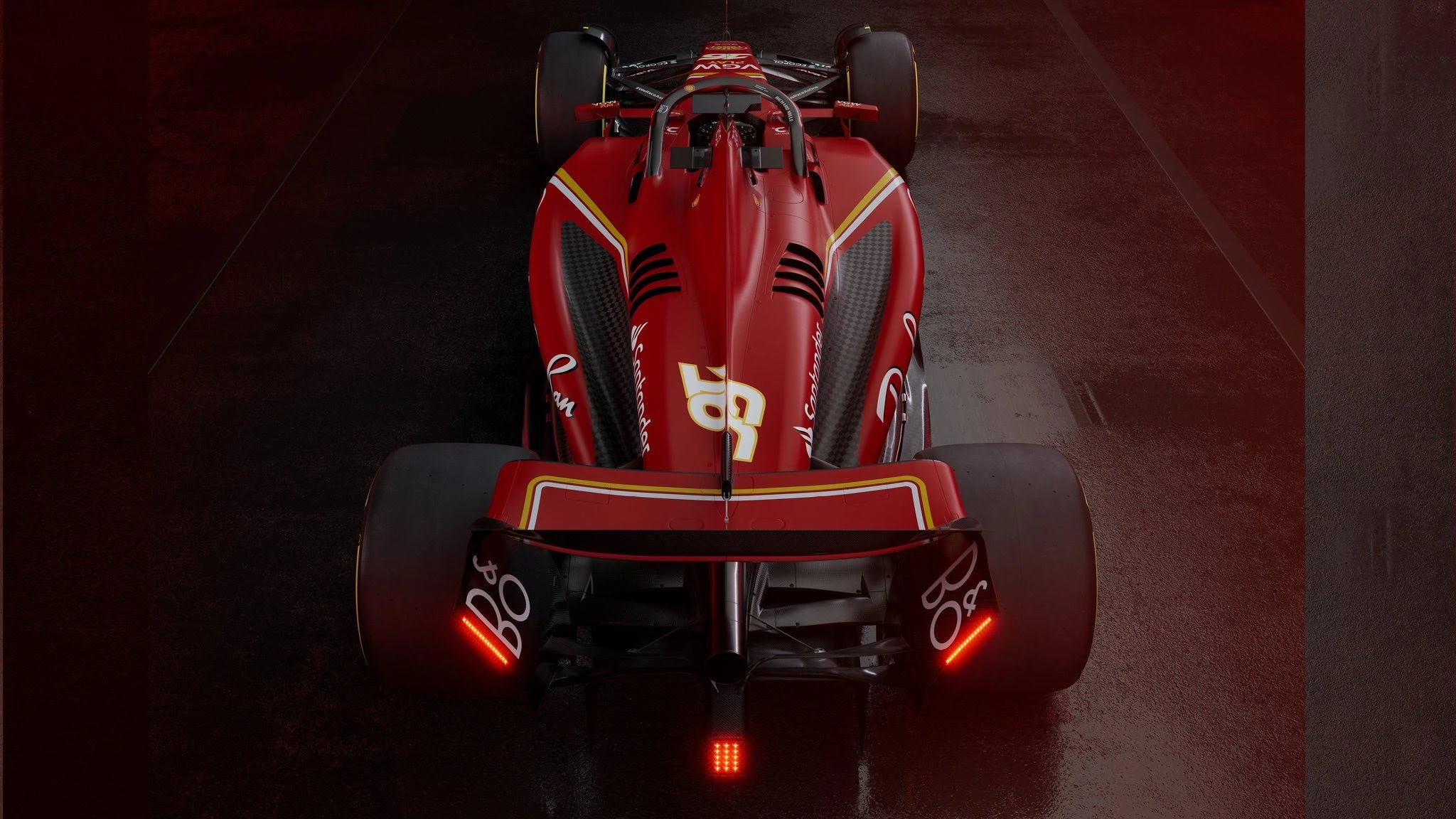
Rear end of the new Ferrari SF-24 (photo: Scuderia Ferrari)
As can be seen looking at the carbon part in the top view image, the upper wall of the sidepods has two very wide descending channels: introduced first of all by Aston Martin, in jargon they are defined as "waterslides" and their aerodynamic function is that to convey air towards the diffuser. If we think about it, the waterslides must do exactly what the rest of the sidepod does at the sides: in theory, the greater the airflow directed towards the diffuser, the greater the pressure gradient between the upper and lower sides of the diffuser itself - hence the generation of aerodynamic downforce.
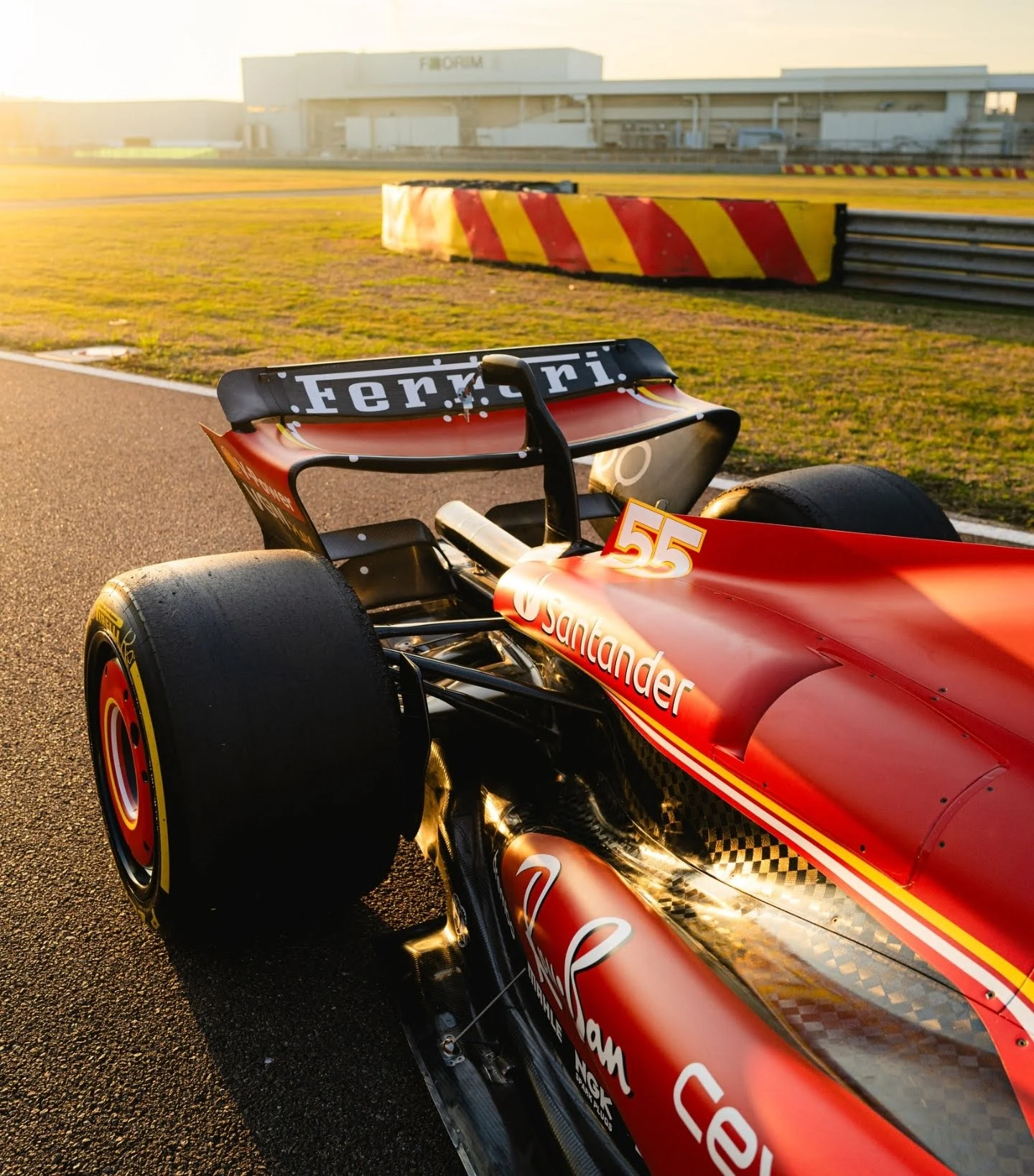
Engine cover's outlet of the Ferrari SF-24 (photo: Scuderia Ferrari)
But as efficient as it may be, the diffuser alone isn't enough to provide all the downforce that a Formula 1 car may need: the missing amount must be provided by the rear wing... From this perspective, the idea that the Ferrari engineers had for the engine cover's shape: we're referring to the tubular-shaped bulges that run alongside the centerline of the vehicle, up to the hot air outlet itself. Without these elements, the flow directed to the rear wing would have a sub-optimal curvature, reducing its aerodynamic efficiency. In addition to this useful phenomenon, the management of the airflows towards the beam wing is also improved.
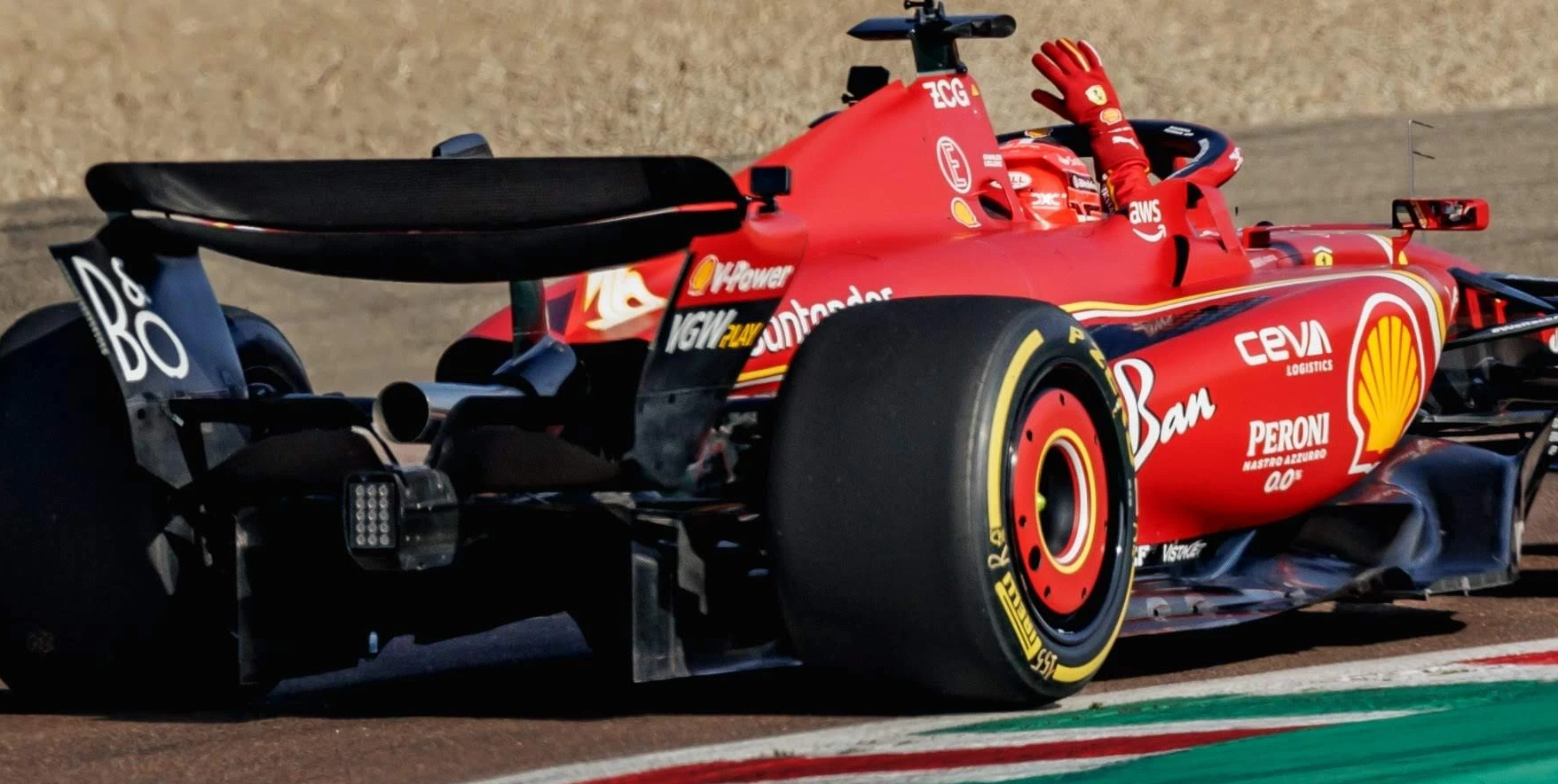
Ferrari SF-24 with reduced cooling layout at the Fiorano filming day (photo: Scuderia Ferrari)
In terms of size, these bulges are so large that they have made the gills that we were used to see behind the cockpit superfluous. Don't be fooled by the fact that in the first photos of this article, which refer to the unveiling configuration, there were 4 of these gills: already on the filming day at Fiorano, in fact, the low cooling requirement pushed the team to use a closed engine cover (in addition to this, a different shape of the so-called "shark fin" above the engine cover was tested, but we'll probably talk about it during the tests, waiting for clearer pictures).
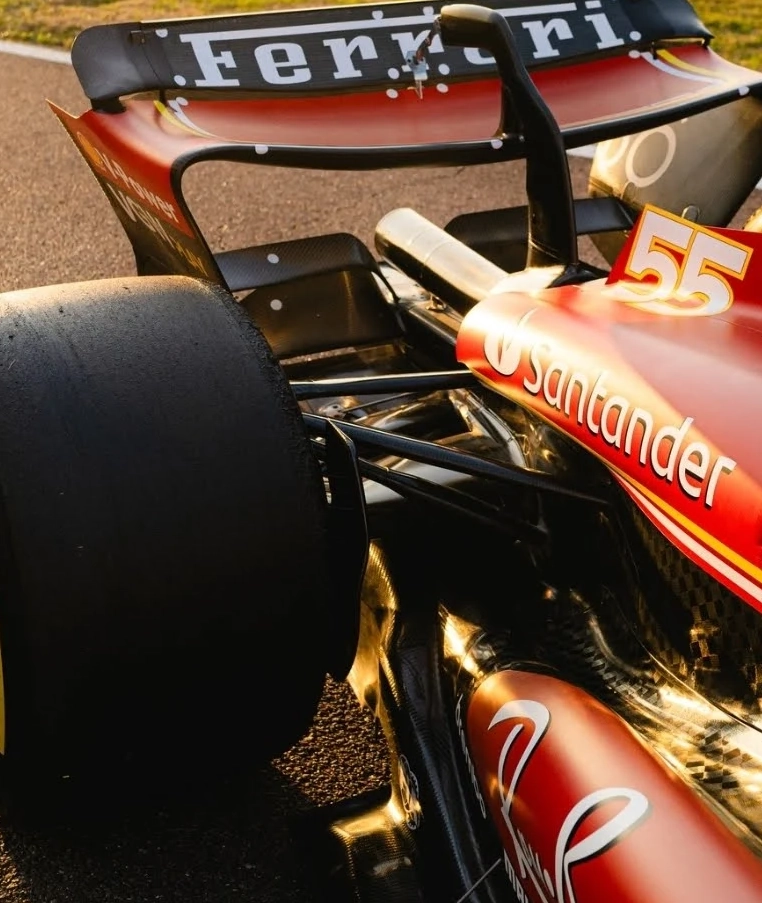
Pull-rod rear suspension of the Ferrari SF-24 (photo: Scuderia Ferrari)
At the end of our analysis, a special mention for the rear suspension, which hasn't abandoned the pull-rod configuration from 2023 to 2024. To date, in addition to Ferrari, only Haas remains (forcedly, as they purchase the entire rear axle from the italian team) loyal to this solution, while all the other teams prefer the push-rod to free up more space along the channels above the diffuser.
However, having modified the geometries, as mentioned with regards to the front end, the desired effect was to reduce the anti-squat, net of the aerodynamic advantages that a push-rod type suspension would have guaranteed. In short, at Ferrari they seem quite confident in the choice made...
"During the development, not only of this car, we studied different suspension layouts (including the push-rod), and we found a good compromise with the current layout. By compromise we mean between aerodynamic performance, weight, compliance of the suspension, etc. The rear suspension of the SF-24 has an innovative concept for us, different from that of previous years. The elements inside the gearbox have been positioned differently"
Enrico Cardile [Ferrari Technical Director, Chassis and Aerodynamics]
Along the suspension layout adopted, the choice was made to move the engine and gearbox back a few centimeters: given the reduced window allowed by the Technical Regulations regarding weight distribution, we expect that under the bodywork there has been a profound redistribution of the various elements to fall within this range, following this retreat of the powertrain. So why are they doing those changes? Probably to ensure more homogeneity in the car's behavior between qualifying and race conditions, where - especially in the first stints - the fuel load shifts the balance of the car by a non-negligible percentage.
What do they expect from the first tests and the start of the 2024 World Championship?
As mentioned at the beginning, the profound evolutions that the SF-24 has undergone during its design do nothing but increase the expectations of both the Ferrari engineers and the Ferrari enviroment in general. The fact that the first kilometers covered by the car didn't create any headaches can immediately set what was brought to the track as a baseline for future updates, which are currently already - according to Cardile - in the wind tunnel.
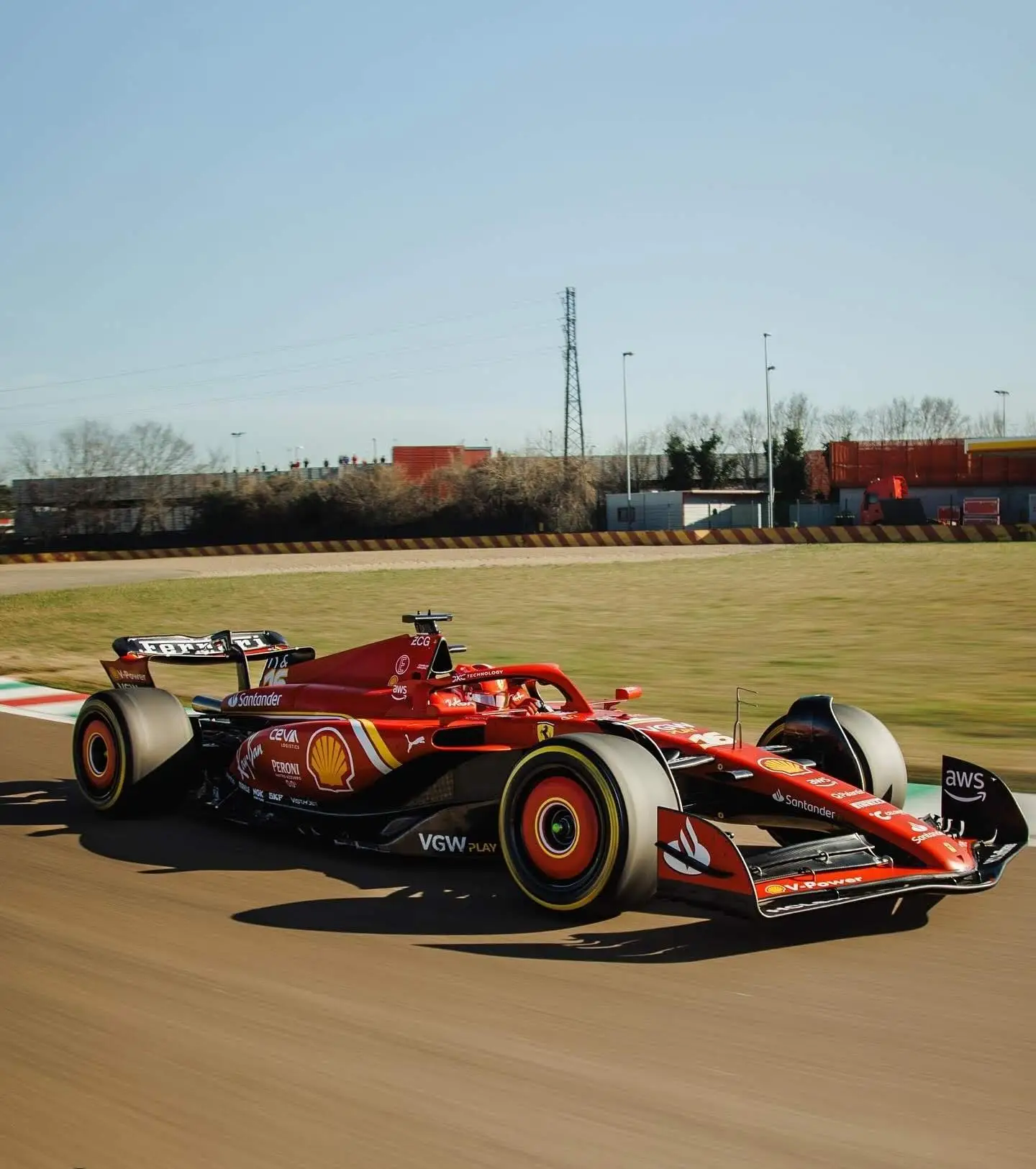
The new Ferrari SF-24 lapping at the Fiorano Circuit (photo: Scuderia Ferrari)
Now all that remains is to understand how Ferrari will fare in terms of performance compared to the competition: the first day of testing in Sakhir is less than a week away...
Index
Ferrari SF-24: a 95% new car to lead the charge against Red Bull
- A car inspired by Red Bull, but without betraying its design philosophy
- Front end developed in continuity with the past, but the nosecone follows the 2024 trend
- Sidepods with deep undercuts and similar inlet to the competitors
- Rear end analysis: Aston Martin-style "waterslides", but the rear suspension is still a pull-rod one
- What do they expect from the first tests and the start of the 2024 World Championship?